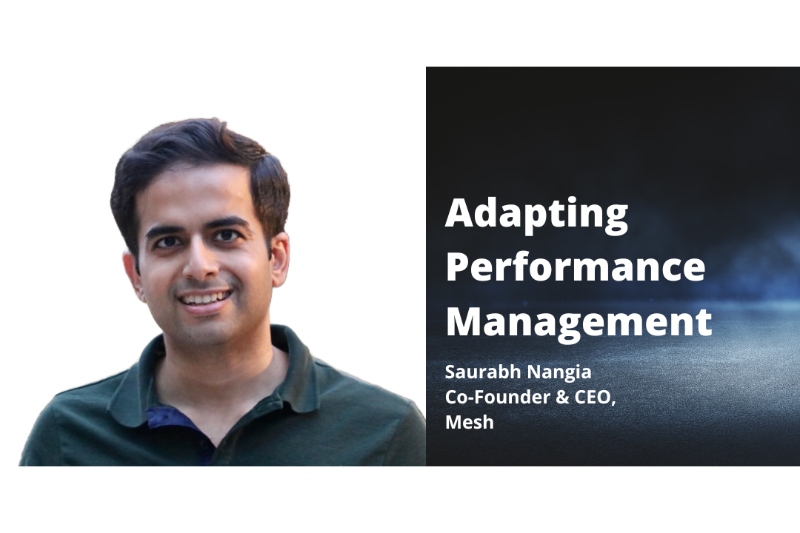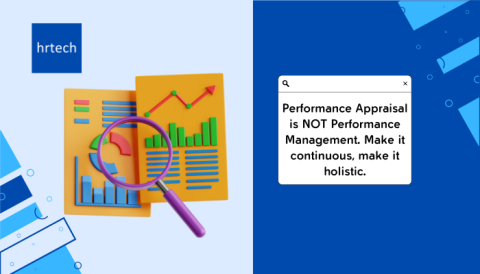The new world of work requires alignment in how companies manage performance and develop their people.

Traditional performance management systems (PMS) cost a lot of time and money but give back very little.
Most PMS systems built around annual forms are outdated, laborious, and fail to produce an accurate picture of performance. A Deloitte survey found that 58% of the executives believed their current performance management approach drives neither employee engagement nor high performance. The pandemic put the last nail in the coffin of outdated PMSes.
The new world of work requires alignment in how companies manage performance and develop their people. But the old-style, process-based PMS modules your HRMS uses no longer works. It probably never did.
Let’s look at why traditional performance management is broken.
Company goals and individual efforts are not aligned
Gallup says that only 44% of people agree that they can connect their own goals to their company’s goals. The entire workforce must feel their goals are personally meaningful and tied to the larger picture to meet their company’s strategic objectives.
Human biases and subjectivity taint the picture
When we give a numerical rating to someone on a form, over 60% of that rating reflects our internal biases and preferences instead of an objective measure of the individual’s performance.
No support for continuous communication and an honest dialogue
Carrying out honest dialogue requires continuous and clear communication that is not supported in any way or form by current performance management systems. Current performance management systems do not enable or even require managers to hold frequent conversations.
Most tools are admin-focused and compliance-driven
The traditional performance management cycle is heavily led by HR instead of managers who are genuinely responsible for managing and developing employee performance. As a result, most HRIS/PMS tools do not use the full extent of technology available today. They merely bring the appraisal and compliance forms online.
Real-life performance doesn’t follow a bell curve
Traditional performance management grades people using the curve or forced ranking of employees. It assumes that your organization will be made up of a small portion of high and low performers, with a large chunk of your employee population being just’ average.’ In reality, performance is driven by the power law.
Now, let’s have a look at some of determining factors of a modern performance management system.
Transparency and visibility
Employees need to feel a connection between their day-to-day effort and the needs of the business. Ceridian says that 92% of respondents who think their work makes a business impact are happier with their jobs.
Adjustment and evolution of goals
Organizations where employees review their personal goals quarterly scored nearly four times more at the top of Deloitte’s Total Performance Index. It also helps leaders and employees adjust their goals.
Timely feedback and honest dialogue
Successful organizations focus on ongoing feedback provided informally in the natural flow of work and rapid feedback loops that give people specific and actionable inputs to implement in real-time, learn from, and course-correct before it is too late.
Celebrating small wins for social recognition
Social recognition has been known to improve employee productivity by over 60%. It also promotes building on one’s strengths rather than highlighting one’s weaknesses.
Unlinking development and compensation
Employee development is too important a subject to let compensation bury it. More often than not, when salaries, bonuses, and increments come into play, authentic feedback and action planning around performance improvement take a backseat. It must change.
How Mesh can help
Mesh is a social performance management platform designed for today’s workforce keeping these trends and needs in mind.
It makes it easy for people to manage goals, ask for feedback, share recognition, and run team check-ins and 1:1s—all in the flow of work. It comes packed with everything you need in a modern performance management solution:
- Goals and OKRs
- Plans and tasks
- Performance reviews
- Recognition and feedback
- Manager 1:1s
- eNPS and pulse checks
Mesh simplifies performance and project management processes and replaces the need for multiple talent management tools with one daily social network for work. Click here to know more.
Mesh on hrtech Marketplace
About the author:

Saurabh Nangia is a tech veteran with a career spanning more than a decade in building AI-powered products.
Nangia is a computer science graduate from the Indian Institute of Technology. He also has a master’s in machine learning from the University of Illinois Urbana-Champaign. Previously, he worked with the personalization team at Amazon.com, where he helped build their recommendation systems.
Over a decade working in the tech industry, Nangia noticed that most companies were about deploying cutting-edge technology to understand and engage their customers. Still, there seemed to be a gap in understanding and supporting the people who made it possible: their employees.
As a result, he went on to start Mesh—a modern, people-first performance management ecosystem. Mesh helps remote-hybrid companies execute their growth plans by keeping their employees engaged—using the power of OKRs, pulse surveys, continuous feedback, and modern performance reviews.





